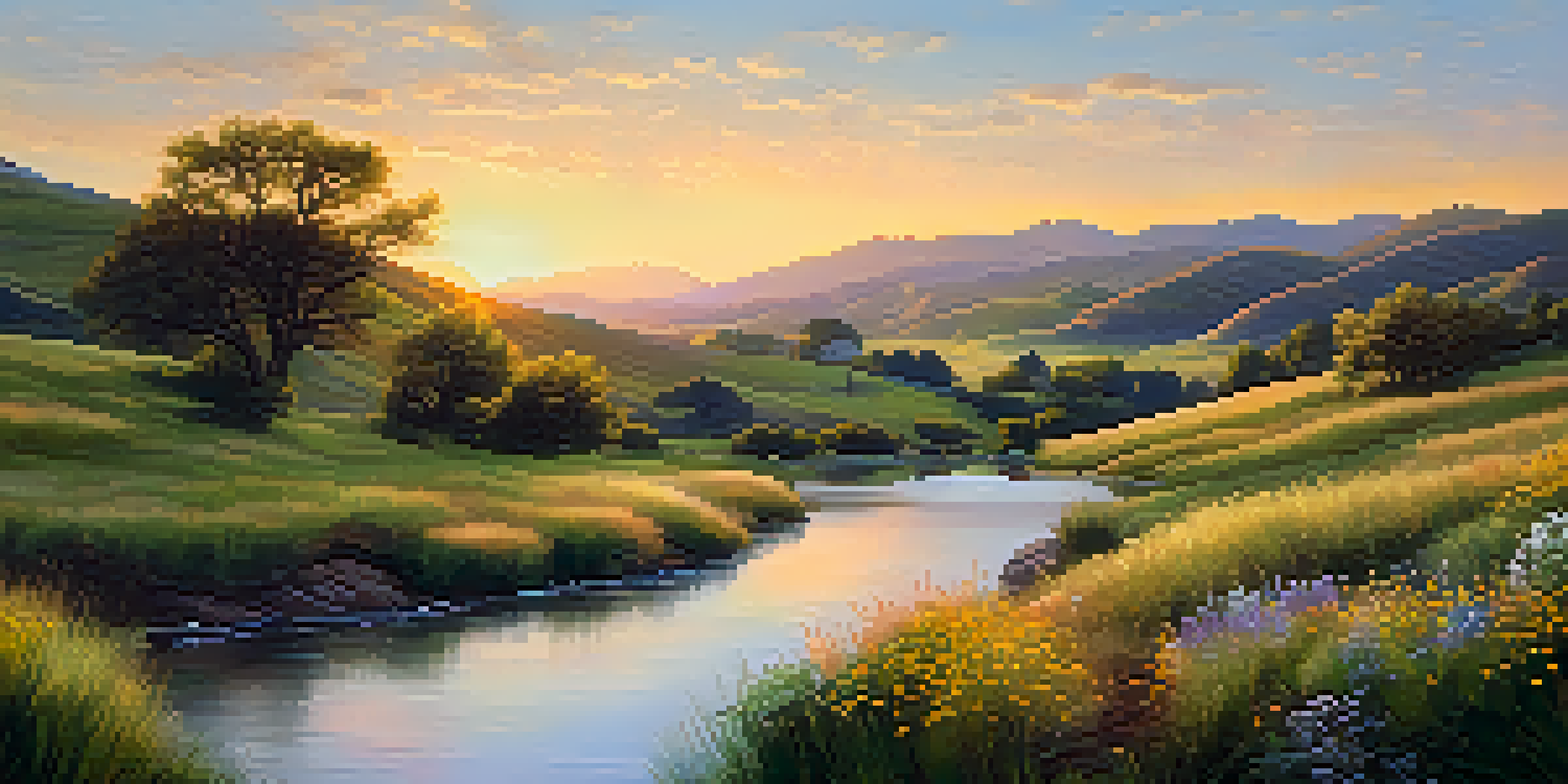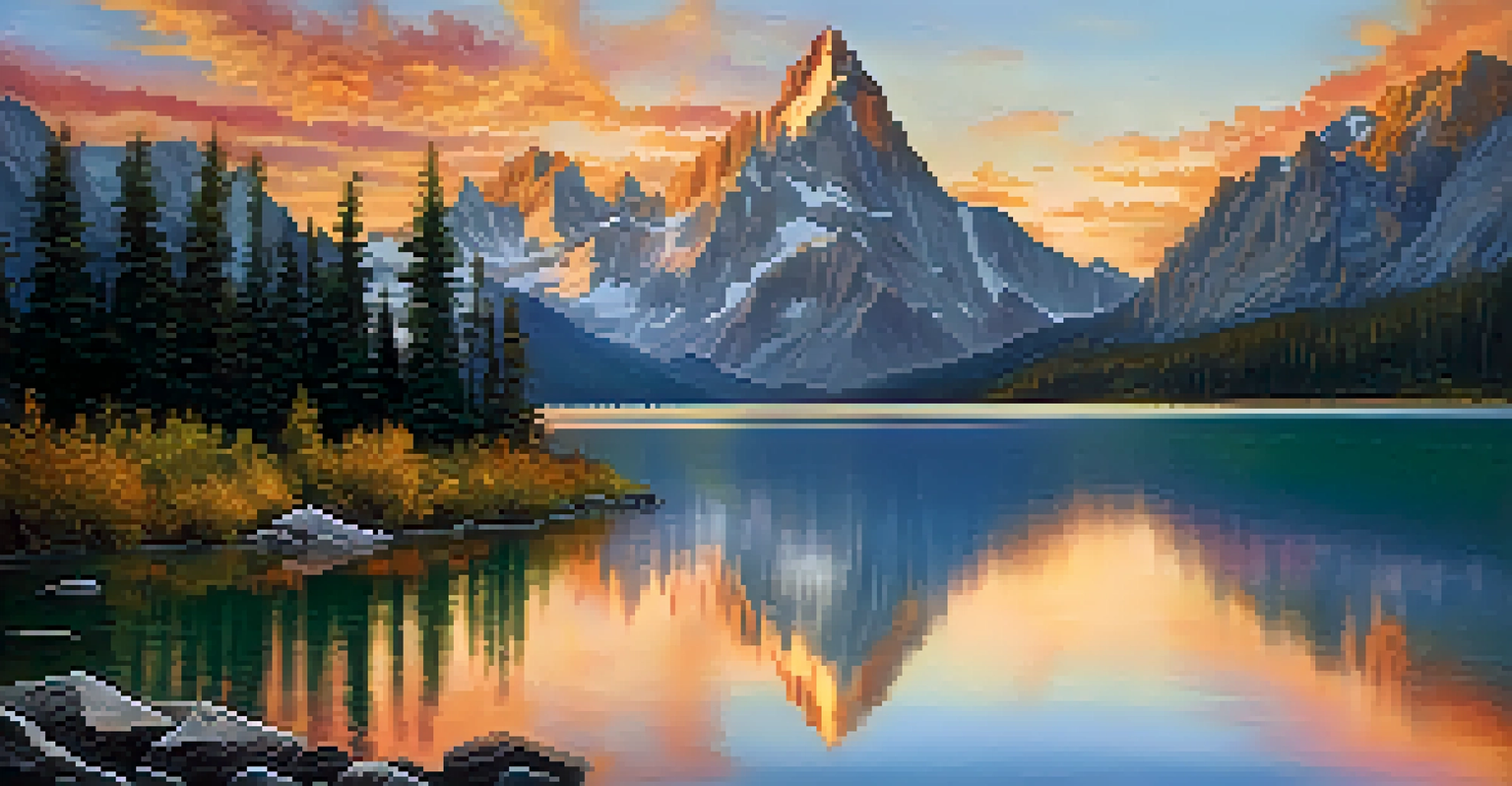Photography Tips for Capturing Outdoor Adventures

Choose the Right Time of Day for Stunning Light
The time of day can significantly impact your outdoor photos. Early mornings and late afternoons, often referred to as the golden hours, provide soft, warm light that enhances the beauty of landscapes and subjects alike. This magical lighting not only adds depth but also creates a more inviting atmosphere in your images.
Photography is the story I fail to put into words.
Shooting in harsh midday sunlight can lead to overly bright highlights and deep shadows, which may not be flattering. Instead, plan your outdoor adventures around these golden hours for the best results. If you’re stuck during midday, look for shaded areas or use reflectors to soften the light.
Remember, the weather can also affect lighting conditions. Overcast days provide diffused light, which can be perfect for capturing vibrant colors without the glare. Embrace the different moods that each time of day can create in your photography.
Compose Your Shots for Maximum Impact
Composition is crucial in photography, especially when capturing outdoor adventures. A well-composed shot can draw viewers in and tell a story. Consider using the rule of thirds: imagine your frame divided into a 3x3 grid and place your subject along those lines or at their intersections for a more dynamic image.

Leading lines, such as trails, rivers, or fences, can guide the viewer's eye through the frame, creating a sense of depth and movement. Don’t forget to include foreground elements to add layers to your photos. This can be anything from interesting rocks to wildflowers that frame your main subject.
Capture Golden Hour Magic
Shooting during early mornings or late afternoons provides soft, warm light that enhances outdoor photos.
Lastly, don’t hesitate to experiment with different angles and perspectives. Sometimes, getting low to the ground or finding a higher vantage point can dramatically change the impact of your shot. Trust your instincts and have fun with the composition!
Utilize Natural Elements for Unique Effects
Nature is packed with elements that can enhance your photography, so don’t shy away from incorporating them into your shots. For example, using branches or leaves to frame your subject can create a more immersive experience for the viewer. This technique draws attention to your main focus while adding an artistic touch.
You don’t take a photograph, you make it.
Water can also be a fantastic natural element to work with. Reflections in lakes or rivers can create stunning symmetry and add an ethereal quality to your photographs. Experiment with different shutter speeds to either freeze the motion of flowing water or create a dreamy blur.
Additionally, consider how weather conditions can influence your shots. Fog, rain, or snow can add a dramatic mood to your outdoor adventures. Embrace these conditions rather than avoiding them, as they often lead to unique and unexpected results.
Master Your Camera Settings for Optimal Results
Understanding your camera settings is key to capturing incredible outdoor photos. Familiarize yourself with exposure, aperture, and ISO, as they work together to create the perfect image. For instance, a lower aperture (like f/2.8) can help blur the background and make your subject stand out, while a higher aperture (like f/11) keeps everything in focus.
Adjusting your ISO is also essential, especially in varying outdoor light conditions. A lower ISO (100-200) is ideal for bright days, while a higher ISO (800 or more) might be necessary in lower light. Just be cautious, as higher ISO settings can introduce noise into your images.
Compose for Visual Impact
Utilizing techniques like the rule of thirds and leading lines can elevate the storytelling aspect of your photography.
Don’t forget to experiment with shutter speed to capture movement or freeze action. For example, a fast shutter speed (1/500 sec) is perfect for freezing a bird in flight, while a slower shutter speed (1/4 sec) can create a beautiful motion blur in waterfalls. Knowing how to manipulate these settings can elevate your photography.
Incorporate People and Wildlife for Dynamic Shots
Adding people or wildlife to your outdoor photos can create a sense of scale and narrative. Capturing your friends or fellow adventurers in action can convey the joy and excitement of the moment. Try candid shots of them exploring or interacting with nature, as these can feel more authentic and engaging.
When photographing wildlife, patience is key. Spend time observing your surroundings and wait for the perfect moment to click the shutter. Use a zoom lens to get closer without disturbing the animals, and remember that the early morning is often when wildlife is most active.
Incorporating these elements not only makes your photos more relatable but also tells a story that resonates with viewers. Share the adventure, the thrill, and the beauty of the moment through your images.
Edit Your Photos to Enhance Natural Beauty
Editing is an essential part of the photography process that can elevate your outdoor images. Software like Adobe Lightroom or even mobile apps can help you adjust brightness, contrast, and color saturation to enhance the natural beauty of your photos. Even subtle tweaks can make a significant difference.
Consider using presets or filters that complement the outdoor vibe of your images. For example, warm tones can enhance sunset photos, while cooler tones can emphasize the serenity of a misty morning. However, strive for a balance; you want to enhance your photos without making them look unnatural.
Edit to Enhance Your Photos
Editing tools can help adjust brightness and color saturation, allowing you to showcase the natural beauty of your outdoor images.
Finally, don’t forget to crop your images if necessary. Removing distractions from the edges can focus attention on the main subject. Editing is a powerful tool, so take the time to refine your images and truly showcase the beauty of your outdoor adventures.
Tell a Story Through Your Photography
Every outdoor adventure has a story to tell, and your photography can capture that narrative. Think about the emotions and experiences you want to convey through your images. Whether it’s the thrill of reaching a mountain summit or the tranquility of a quiet forest, aim to evoke those feelings.
To tell a compelling story, consider creating a photo series that captures different aspects of your adventure. For instance, document the journey from start to finish, including preparation, highlights, and candid moments. This not only adds depth to your photography but also engages your audience more fully.

As you share your images, don’t forget to pair them with thoughtful captions or narratives. This adds context and helps viewers connect with your experiences on a deeper level. Remember, photography is not just about capturing moments; it’s about sharing stories that resonate with others.
Practice, Experiment, and Have Fun with Outdoor Photography
The best way to improve your outdoor photography skills is simply to practice. Take your camera on every adventure, whether it's a hike, a beach day, or just a walk in the park. The more you shoot, the more comfortable you'll become with your camera and the various settings.
Don't be afraid to experiment with different techniques and styles. Try out various compositions, play with light, and explore unique angles. Each outing is an opportunity to learn and grow, so embrace the process and allow your creativity to flourish.
Above all, remember to have fun! Photography should be an enjoyable experience, especially when capturing the beauty of the great outdoors. Soak in the moments, connect with nature, and let your passion shine through in every shot you take.